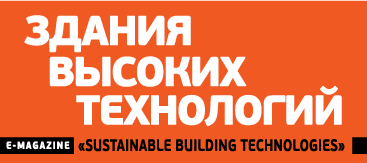
Improving the reliability of buildings’ sustainability data
Frank Hovorka, President of The Federation of European Heating, Ventilation and Air Conditioning associations (REHVA) gave the speech “Improving the reliability of buildings’ sustainability data and their integration in financial risk analysis and decision-making”.
Real estate is crucial for the successful transition to a low-carbon economy as it represents 40% of global energy consumption and emits about the same amount of greenhouse gas emissions. Under various scenarios, energy demand from the sector is expected to double by 2050 and direct and indirect CO2 emissions to increase in the range of 50–150% without additional mitigation efforts1 . In order to stay on the path below 2°C, buildings-related emissions need to decrease by nearly 80% from 2015 (Paris agreement) levels by 2050. This can only be achieved by consistently integrating the environmental externalities (“risks”) into financial decision making.

Evidence on the positive links between buildings’ sustainability (like energy performance and GHG emissions) and financial performance2,3, is increasingly compelling and much work has gone into developing frameworks and tools for the industry, including on sustainability metrics, to support practitioners with the integration of ESG(environmental, social and governance) and climate related aspects into their financial decision making. Yet, as of today, energy/environmental data remain insufficiently considered in risk assessments and resulting investment decisions. A crucial reason for this is that existing data on sustainability performance is often not considered as a reliable and accurate enough proxy for the translation into financial performance.
_633.jpg)
Increasing the reliability of information on the energy/environmental performance of buildings is a fundamental brick in the broader global effort to demonstrate and integrate the correlation between their environmental and financial performance into decision making. It is particularly important to ensure that risk departments are associated to this effort to include sustainability considerations in risk assessment, and therefore systematically encourage sustainability in real estate.
Building industry needs to translate information and target all main financial industry groups (banks, investors and insurers) who deal with real assets and here in particular the ESG and risk management departments.
While both regulatory and voluntary standards, labels and third-party verification already exist, they represent primarily compliance-based methods and procedures and give no indication about the reliability of the underlying information. The resulting uncertainty of the currently available data (voluntary disclosure and certification as well as mandatory labels) cannot create the chain of trust that is indispensable for investments, loans and securities to be directed to the sustainable and energy efficiency buildings sector and projects.
By analyzing and verifying how the sustainability data was produced (perimeter and method of calculation or measurement), the proposed process would allow to assess and disclose the level of quality and certainty of the data. Importantly, we need to provide a qualitative assessment on the extent to which the data captures the actual performance of the building. Improvements in technology (e.g. the development of numerical tools applied to buildings like BIM) have made physical data, tracking actual energy/ environmental performance of buildings, increasingly accessible at a lower cost. Comparing calculated available data to the actual physical data would allow to better understand the reliability of calculated data from different sources.
This data analytics process would enhance trust in the data and facilitate its integration in valuation, risk analysis and financing decision across the banking, investors and insurance industries. Ultimately it would allow to scale up financial flows towards sustainable properties.